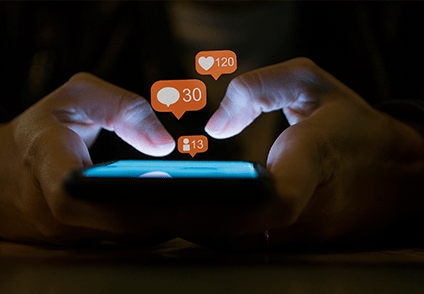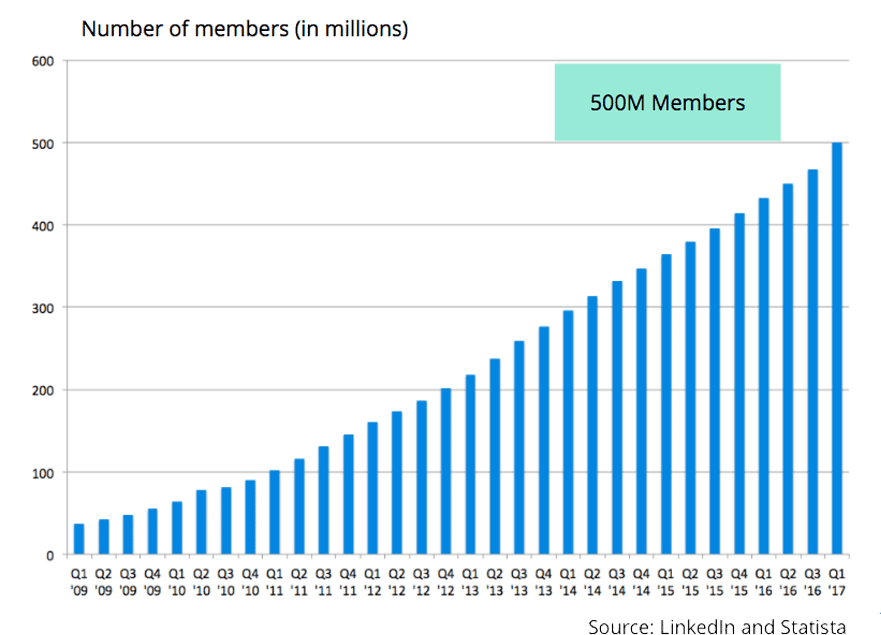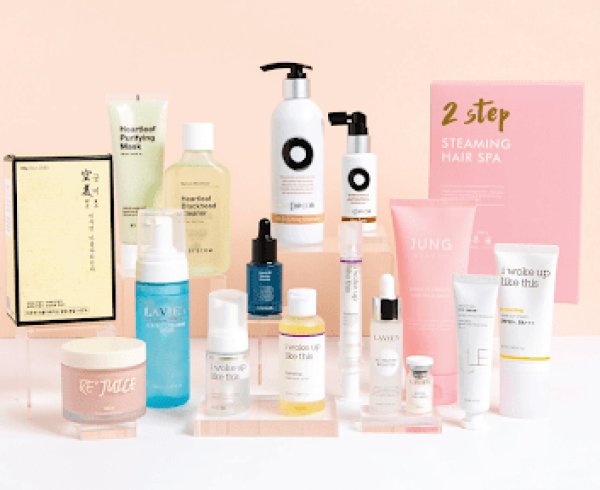
The marketing landscape is ever changing, and with the rise of new platforms, tech and consumer preferences, 2019 may pose new challenges and opportunities for marketers. What are some of the emerging trends on social media in 2019, and how will this impact your marketing strategy? Read on to find out more.
Table of Contents
The Rise of Social Data Security and Transparency
We know some of you are too busy to read, so we have a time-saving measure for you. Simply click on the button below, and we will get our friendly account managers to talk to you about fixing your contents:
It is a wake up call for the social media platforms, users and marketers alike when it comes to privacy and security. Brands have to conform to the new GDPR, with thousands of websites prompting their online visitors to accept GDPR cookie consent notification overnight. Social media giants like Facebook, Linkedin, Twitter, and Google are also ramping up their efforts to increase transparency on their platforms.

Even though 2018 had its challenges, it translates into tremendous new opportunities for brands to establish deeper, more authentic and longer-lasting relationships with customers in 2019.To keep pace with these changes, brands are focusing less on maximising reach and more on generating transparent and quality engagement.
“Simple likes and comments to behaviors that have more tangible impact on brand value, such as viewership, clicks and sales conversions.”
The term “engagement” has evolved from simple likes and comments to behaviors that have more tangible impact on brand value, such as viewership, clicks and sales conversions. And the one-size-fits-all approach to social media – repurposing the same posts and distributing it across different social media network, is giving way to context and audience-specific messaging.
The Rise of Messaging Apps and Chatbots in Social Customer Service
Across the board, users are spending more time on messaging apps and less time sharing news on social. As people spend more time on messaging apps, brands should start developing strategies to engage them there, just as they would on email or social media.
The rise of messaging apps will be interlinked with the proliferation of Artificial Intelligence (AI) and chatbots. When combined together, AI and messaging apps will bring a new level of customer care to social media platforms. As Chatbots become more intelligent, sophisticated and highly automated in the way they interact with customers, we will see messaging apps continue to dominate the social media landscape throughout 2019.

When it comes to increasing your customer service experience, Chatbots are valuable as they are extremely effective for answering simple enquiries and making transactional exchanges. While it can’t replace the personal touch, the chatbot is a simple tool to free up your team members to focus on more complex consumer needs.
The Rise Of Live Video and Vertical Video
Video is everywhere. From long-form videos, short videos, live-streaming videos, Instagram stories, vlogs, webinars, pinnable videos, everywhere is video. Video is becoming a dominant content medium.
Ephemeral content such as Instagram stories and live videos across social networks is a key development that has gained a lot of popularity in 2018. Live video is something that’s been around for a while, especially on YouTube, but its popularity across Facebook (and now Instagram) has made it an opportunity for marketers in 2019. The interactivity of live video makes it a powerful tool for marketers to engage with their audience and strengthen the relationship between a brand and its followers.

Vertical video is another trend in video marketing for 2019. As our phone screens are held vertically most of the time, consumers are receptive to vertical videos that are within 3-5 minutes in length. In fact, advertisers that started using vertical videos to promote their products say they got a lot better results than the ones that didn’t, especially when it comes to views and engagement.
The rise of vertical video presents both opportunities and challenges when it comes to brand storytelling. Brands have to produce stories that grab attention from consumers in-the-moment as viewers hold their phones upright and sift through
Pro:
The vertical format inherently requires a closer cropped, more refined video shoot.
Cons:
The vertical orientation offers the best interactivity as the consumer holds their smartphone in the upright position most of the time when consuming content.
With a ramp up in deployment of 5G networks (which will make content delivery up to 100 times faster) the video trends above will only be compounded. In 2019, investment into video content production will continue to grow and social media will fuel the industry’s growth.
The Rise of Niche Platforms
Video is everywhere. From long-form videos, short videos, live-streaming videos, Instagram stories, vlogs, webinars, pinnable videos, everywhere is video. Video is becoming a dominant content medium.
The future belongs to the younger generation. And we have begun to see the rise of niche platforms to reach younger populations, particularly Gen Z. Platform likes TikTok, Twitch and SnapChat are seen as new “Teen” platforms for reaching this audience.
Young people are turning their backs on Facebook, slowly. On the other hand, vertical-focused platforms like PicsArt, TikTok and Twitch gain a foothold by offering opportunities for brands to reach the new age audience.
Here’s a quick look of the overall Monthly Active Users for the top 20 social networks.
The Rise of Mini-Programs
In the debate of what is the next shiny object for social networks, WeChat pioneered something they call ‘mini-programs’. They are essentially mini applications within a single app that create new ecosystems for tools, reporting and microsites. While Tencent were the first to implement them, we believe we will see many other tech giants implementing similar technology. As WeChat mini programs grow, consumers will likely start turning to the platform over traditional app stores due to the convenience of access to functionalities and benefits.
Overall, the user experience is better with mini programs. Not only is it more convenient to switch between smartphone activities, mini programs allow users to do everything quickly without leaving the main WeChat app. Furthermore, they are also cloud-based, and do not require any storage space or additional app downloads.
The Rise Of Dynamic Ads
Dynamic ads (also known as dynamic creatives) are banners that automatically change in order to adapt content and promotions specifically to each user, ensuring that each user is exposed to the most effective creative for him or her.
Facebook and LinkedIn are both offering dynamic ads solutions. Marketers can make use of behavioral data, such as product affinities, browsing history, user interests and geo-location to dynamically display personalised ads and customised promotions that match the user’s unique preferences.
Improve conversion rate
Dynamic ads drive a 2x higher click-through rate (CTR) and drive better performance.
The benefits of using dynamic ads includes
Increase roi and decrease ad spend
50% lower cost-per-acquisition (CPA) compared to static ads.
Improve conversion rate
Dynamic ads drive a 2x higher click-through rate (CTR) and drive better performance.
Increase relevance
Always reach your visitors with the most relevant, up-to-date content wherever they are.
More efficient
No additional resources needs to optimise the ads manually
For example, Facebook dynamic ads automatically show the right products to people who have expressed interest on your website, app or elsewhere on the Internet. You can simply upload your product catalogue and set up your campaign once, and the algorithm will take care of the rest.
This functionality allows you to find the correct audience for each product and display information like pricing and availability in real-time.
The Rise of LinkedIn In The Social Media Race
We expect 2019 to be the year when brands finally realise the benefits of growing their influence through in-house thought leaders on LinkedIn. A quick look at LinkedIn’s journey in the past 15 years.

LinkedIn video might be coming in a bit late in the game (launched in 2017), but the delay could be worth the wait in light of its potential gains for marketers.
And unlike other social media channels, the platform isn’t bombarded with fake news, unwanted automated comments and fake profiles that bog down and dilute quality content.
Dominating the B2B marketing, Linkedin is becoming an essential platform for all things related to marketing and communications. Here are some of the key:
a) Pulse
b) Voice
message
c) Recomme
-ndations
d) SlideShare
e) Sales
navigator
f) InMail
g) Lynda
h) Analytics
It is vital for marketers to stay ahead of the game by staying abreast of the latest social media marketing trends and equipping themselves with the skills required to make the most out of these platforms.
With its new features and updates, LinkedIn is becoming a social media platform that you shouldn’t overlook, especially if you are a B2B marketer.
Conclusion
Looking ahead to the future of social in 2019 and beyond, the brands that are most likely to win are the ones that place personalisation and customer experience at the heart of their business.
It is vital for marketers to stay ahead of the game by staying abreast of the latest social media marketing trends and equipping themselves with the skills required to make the most out of these platforms.

























